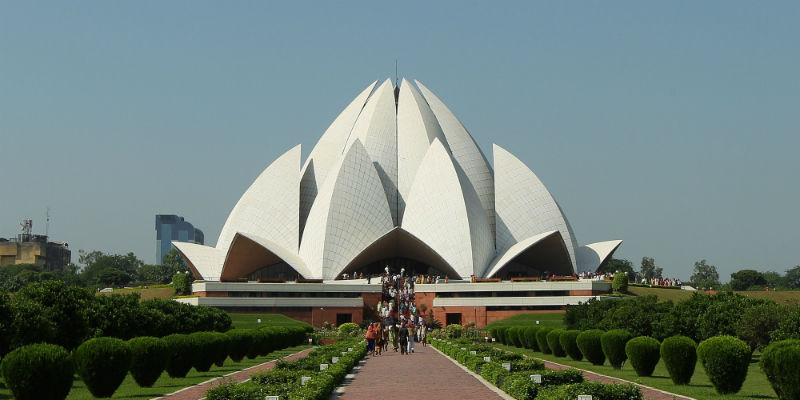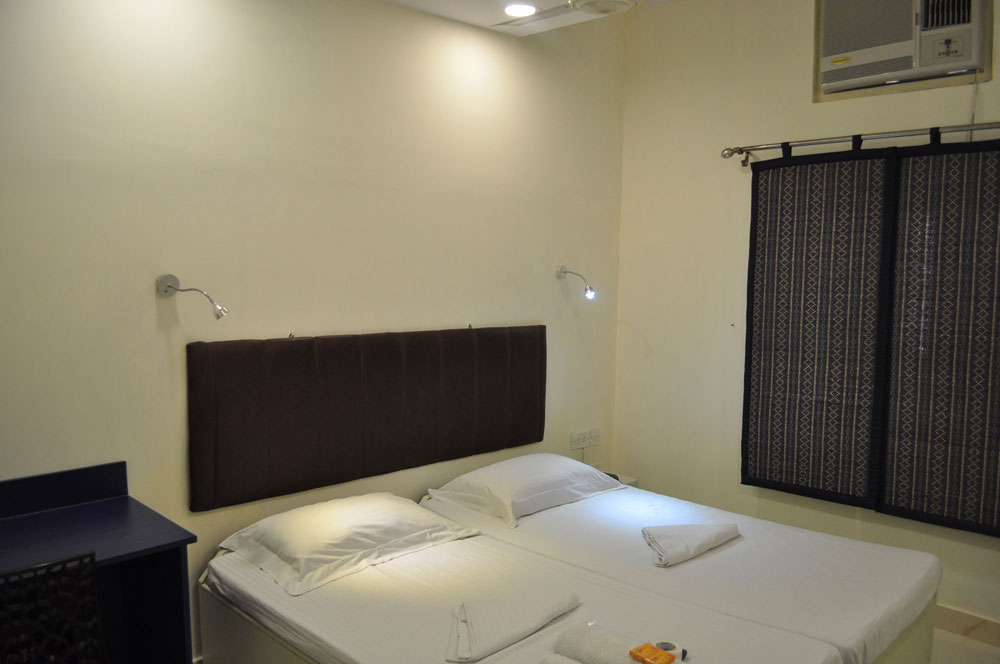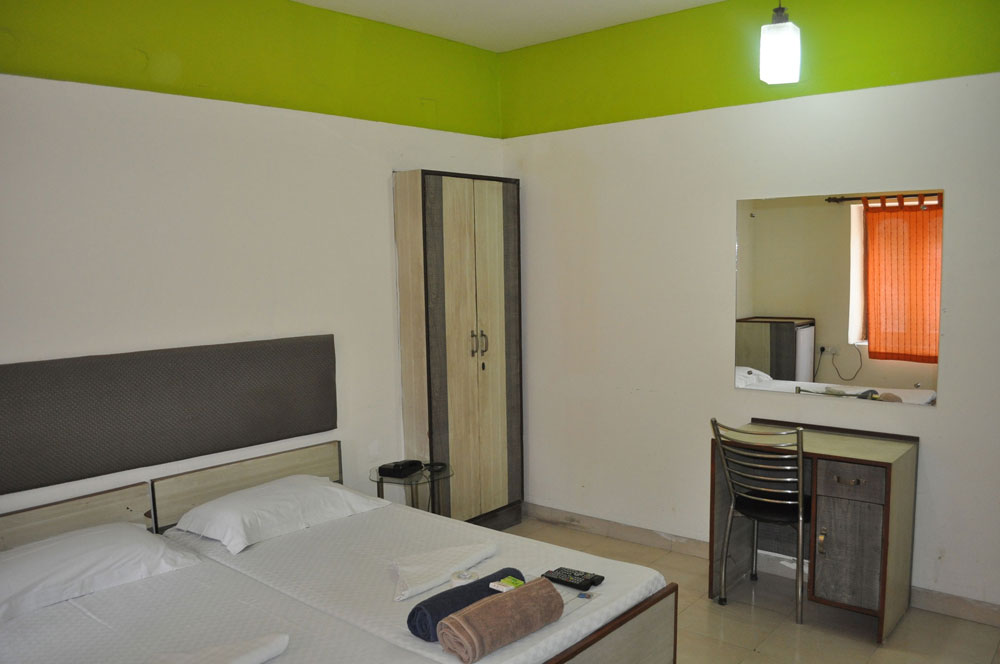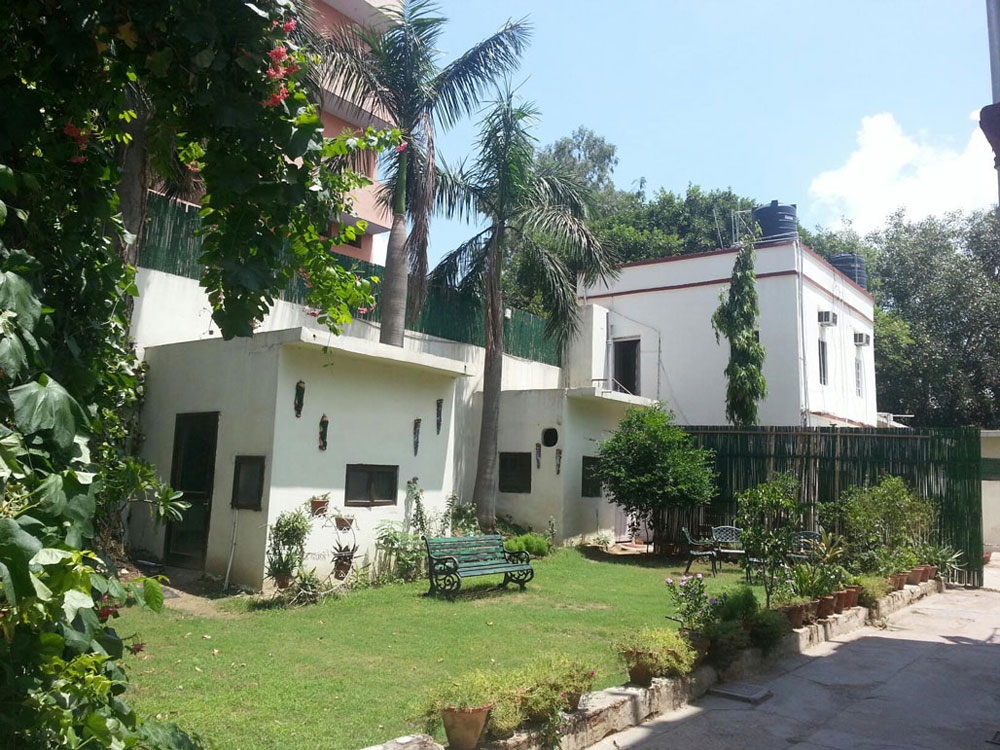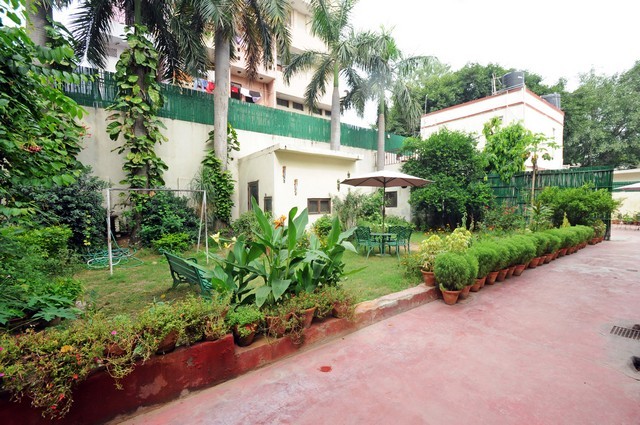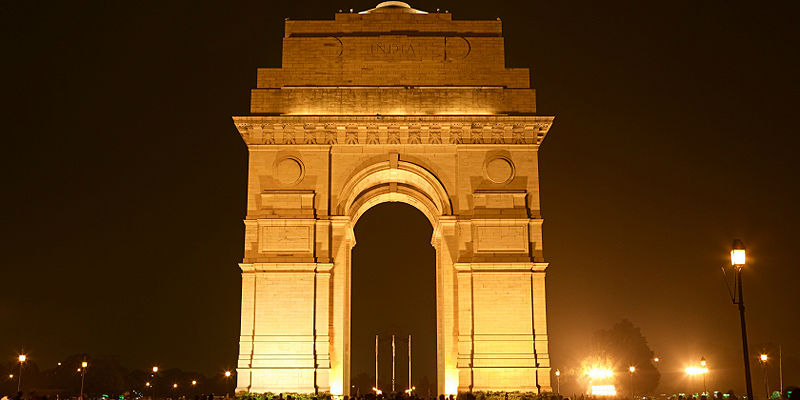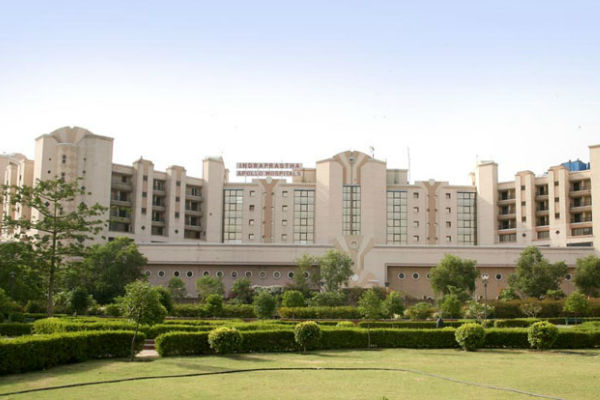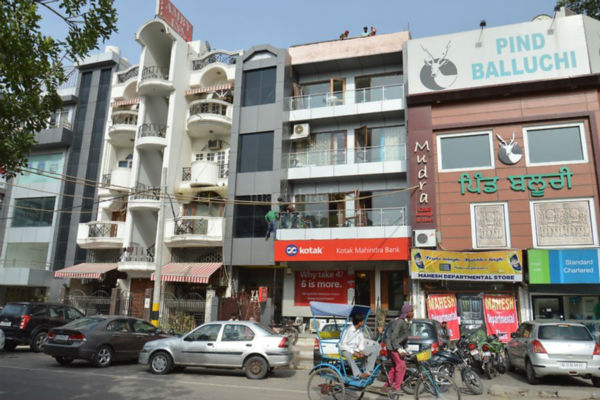Delhi Tourism
NEW Delhi, India's national capital is a fusion of the ancient and the modern. The fascinating city reflects a rich culture, boasts of amazing architecture and is seeped in history. It is also a vibrant metropolis, with modern, well-planned office, commercial and residential complexes and colourful bazaars. Interestingly, the capital also generates a mesmerising charm with its well composed and spacious streets under the shade of beautifully lined avenues of trees and tall and imposing government buildings. Explore the wonders of Delhi with a home stay in the city.
Delhi has behind it a great history. Delhi is also known as the heart of India. It is the historic capital of India, where many empires rose and fell before dawn. Delhi has a 5000 years old history. Delhi was the focal point for the first war of independence in 1857. The history of Delhi began with the creation of Indraprastha by the Pandavas. Delhi is full of historical buildings, heritage sites temples etc. The country's finest museums, whether it is the National Museum, the Craft Museum, the Rail Museum, or the Museum of Natural History and Science, are all in Delhi. Every state of India has its own emporium at New Delhi, where a tourist can buy or select among handicrafts, textiles and jewelry of a particular region.
Lotus Temple
The Lotus Temple is a Bahá'í House of Worship, situated in South Delhi and shaped like a lotus. It was built by the Bahá’í community.
India Gate and Rajpath
Situated along the ceremonial Rajpath avenue (meaning King's Way) in New Delhi, India Gate is a memorial raised in honour of the Indian soldiers who died during the Afghan wars and World War I. The names of the soldiers who died in these wars are inscribed on the walls. The cenotaph (or shrine) in the middle is constructed with black marble and depicts a rifle placed on its barrel, crested by a soldier's helmet.
Humayun's Tomb
Humayun's Tomb was built by Humayun's widow, Hamida Banu Begum. Designed by a Persian architect named Mirak Mirza Ghiyas, the structure was begun in 1562 and completed in 1565. The tomb established a standard for all later Mughal monuments, which followed its design, most notably the Taj Mahal.
Lodhi Gardens
The Lodhi Gardens is a park spread over 90 acres. It contains architectural works of the 15th century Sayyid and Lodi’s, a Pathan dynasty which ruled much of Northern India during the 16th century.
Nizamuddin Dargah
Hazrat Nizamuddin Auliyaa Dargah is located in New Delhi, across the road from Humayun's tomb. The 'dargah' of revered Sufi saint Hazrat Nizamuddin Auliyaa has its devotees all over the Islamic world. A settlement has sprung up here, known as 'Nizamuddin' for short. This shrine also houses the tomb of Amir Khusrau, a famous poet and the saint's beloved disciple. Encroachments plaque, the shrine, and the area itself, seem to belong to another century. The shrine was built by Muhammad Tughluq & is one of the sacred places of pilgrimage in India.
Purana Quila
The Purana Quila (Old Fort) is a good example of medieval military architecture. Built by Humayun, with later-day modifications by Sher Shah Suri, the Purana Quila is a monument of bold design, which is strong, straightforward, and every inch a fortress. It is different from the well-planned, carefully decorated, and palatial forts of the later Mughal rulers. Purana Quila is also different from the later forts of the Mughals, as it does not have a complex of palaces, administrative, and recreational buildings as is generally found in the forts built later on.
Safdarjung's Tomb
Safdarjung's tomb was built by Nawab Shuja-ud-Daulah, the son of Safdarjung. Safdarjung was the governor of Awadh and later became the Prime Minister of Muhammad Shah, the Mughal emperor. Built in 1753-1754, the Safdarjung tomb lies at the Lodi road, New Delhi. Safdarjung's tomb is set in the middle of a garden, which spreads over an area of 300 sq m. The garden of Safdarjung's tomb is laid down on the pattern of the Mughal Charbagh style.
Delhi Zoo
The Delhi zoo came decades later after New Delhi was built. although the idea to have a zoo at the national capital was mooted in 1951, the park was inaugurated in November 1959. In 1952 the Indian Board for Wildlife created a committee to look into creating a zoo for Delhi. The government of India was to develop the zoo and then turn it over to Delhi as a working enterprise
Jantar Mantar
The Yantra Mandir consists of 13 architectural astronomy instruments, built by Maharaja Jai Singh II between 1727 to 1734.
Rashtrapati Bhawan
Built with a mix of Western and Indian styles, Rashtrapati Bhavan was originally built for the Governor General of India. Inaugurated in 1931 as the Viceregal Lodge, the name was changed in 1950 after India became a republic.
Nizamuddin Railway Station
The area was named 'Kale khan ki sarai', a sarai, or rest house for travellers or caravans and royal route from Mughal imperial courts and Chandni Chowk to their retreat at Mehrauli some 32 km away.
ISBT Sarai Kale Khan
The area was named 'Kale khan ki sarai', a sarai, or rest house for travellers or caravans and royal route from Mughal imperial courts and Chandni Chowk to their retreat at Mehrauli some 32 km away.
Jawaharlal Nehru Stadium
To preserve the iconic character of Jawaharlal Nehru Stadium, an innovative design for roof over seating tier has been provided this is the one of the largest membrane roof system in the world.
Connaught Place
Connaught Place, built in 1931, is one of Delhi's most popular shopping centres. There is nothing that one cannot buy here. It also has several eating-houses. The state emporia buildings are also located in this area so are the head offices of major banks, airlines and other such things of importance to the tourist. The complex, popularly referred to as CP, is an important meeting point for all sections of people and is something.
Gurdwara Bangla Sahib
One of the many Gurdwaras in Delhi, Gurdwara Bangla Sahib is the most visited one in the Delhi area. Millions visit this Gurdwara from all over the world and of all religions to offer their prayers at this elegant yet historical Gurdwara in Delhi. This is not just a sacred Sikh shrine, but also very important to many Hindus
Raj Ghat
On the bank Yamuna River, which flows past Delhi, there is Raj Ghat, the final resting place of Mahatma Gandhi, the father of the nation. It has become an essential point of call for all visiting dignitaries. Two museums dedicated to Mahatma Gandhi's life are also situated nearby.
Shanti Van
Lying close to the Raj Ghat, the Shanti Vana (literally, the forest of peace) is the place where India's first Prime Minister Jawaharlal Nehru was cremated. The area is now a beautiful park adorned by trees planted by visiting dignitaries and heads of state.
Jama Masjid
The Masjid-i-Jahan Numa, commonly known as Jama Masjid, is the principal mosque of Old Delhi. Commissioned by the Mughal Emperor Shah Jahan and completed in the year 1656, it is one of the largest and best known mosques in India.
Sansad Bhavan
Sansad Bhavan or the Parliament of India is a circular building designed by the British architects Sir Edwin Lutyens and Sir Herbert Baker in 1912-1913. Construction began in 1921, and in 1927 the building was opened as the home of the Council of State, the Central Legislative Assembly, and the Chamber of Princes.
Akshardham Temple
The Akshardham Temple complex in Delhi was opened to the public on November 8, 2005. It reflects the colorful Hindu religion. The Delhi Akshardham is an imitation of the Akshardham in Gandhinagar, Gujarat, India. Colossal. This is the word which comes in mind when we talk of the famous Swaminarayan temple in Delhi, as it is also known.It is set in a vast 100 acre site. It has been built on the banks of the serene River Yamuna and has sprawling lush manicured lawns adorned with water fountains and carved pavilions. A staggering 2 billion was spent on the construction of this grand place of worship.The beautiful Akshardham mandir was built without steel and is entirely composed of sandstone and marble.
Tughlaqabad Fort
When Ghazi Malik founded the Tughlaq Dynasty in 1321, he built the strongest fort in Delhi at Tughlaqabad, completed with great speed within four years of his rule. It is said that Ghazi Malik, when only a slave to Mubarak Khilji, had suggested this rocky prominence as an ideal site for a fort. The Khilji Sultan laughed and suggested that the slave build a fort there when he became a Sultan. Ghazi Malik as Ghiyasuddin Tughlaq did just that: Tughlaqabad is Delhi's most colossal and awesome fort even in its ruined state. Within its sky-touching walls, double-storied bastions, and gigantic towers were housed grand palaces, splendid mosques, and audience halls.
National Museum
The National Museum, New Delhi is the largest museum in India. It holds variety of articles ranging from pre-historic era to modern works of art. It is run by the Ministry of Culture, part of the Government of India. The museum is situated on the corner of Janpath and Maulana Azad Road.
Red Fort
The decision for constructing the Red Fort was made in 1639, when Shah Jahan decided to shift his capital from Agra to Delhi. Within eight years, Shahjahanabad was completed with the Red Fort-Qila-i-Mubarak (fortunate citadel) - Delhi's stourh fort - ready in all its magnificence to receive the Emperor. Though much has changed with the large-scale demolitions during the British occupation of the fort, its important structures have survived.
Qutub Minar
The Qutub Minar is located in a Mehrauli in South Delhi. It was built by Qutb-ud-din Aibak of the Slave Dynasty, who took possession of Delhi in 1206. It is a fluted red sandstone tower, which tapers up to a height of 72.5 metres and is covered with intricate carvings and verses from the Qur'an. Qutub-ud-din Aybak began constructing this victory tower as a sign of Muslim domination of Delhi and as a minaret for the Muslim priest, the muezzin, to call the faithful to prayer.
Chandni Chowk
Chandni Chowk, a main marketplace in Delhi, keeps alive the city's living legacy of Shahjahanabad. Created by Shah Jahan the builder of Taj Mahal, the old city, with the Red Fort as its focal point and Jama Masjid as the praying centre, has a fascinating market called Chandni Chowk. Legend has it that Shah Jahan planned Chandni Chowk so that his daughter could shop for all that she wanted.

